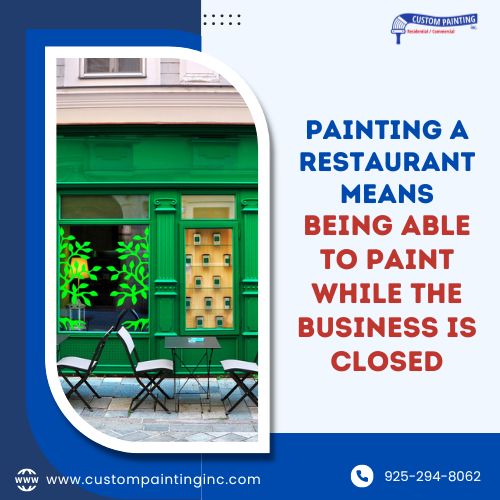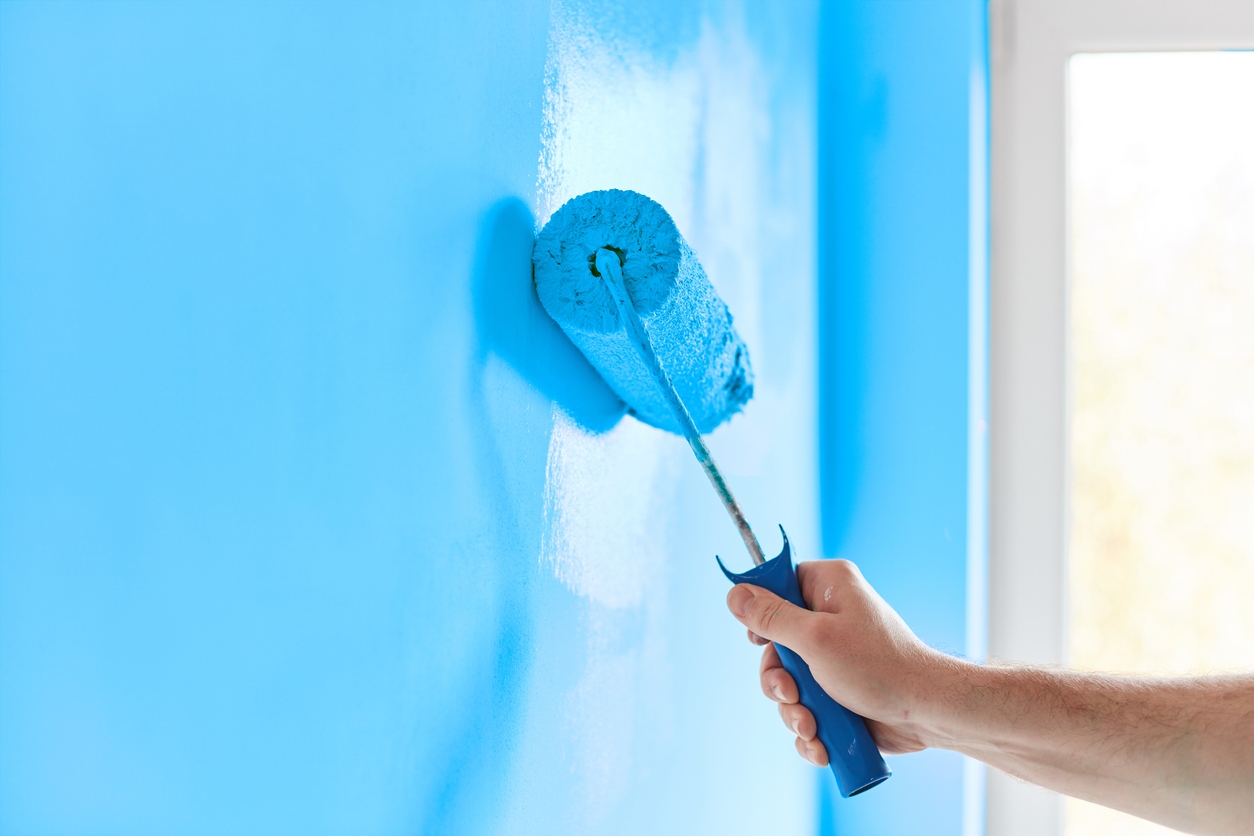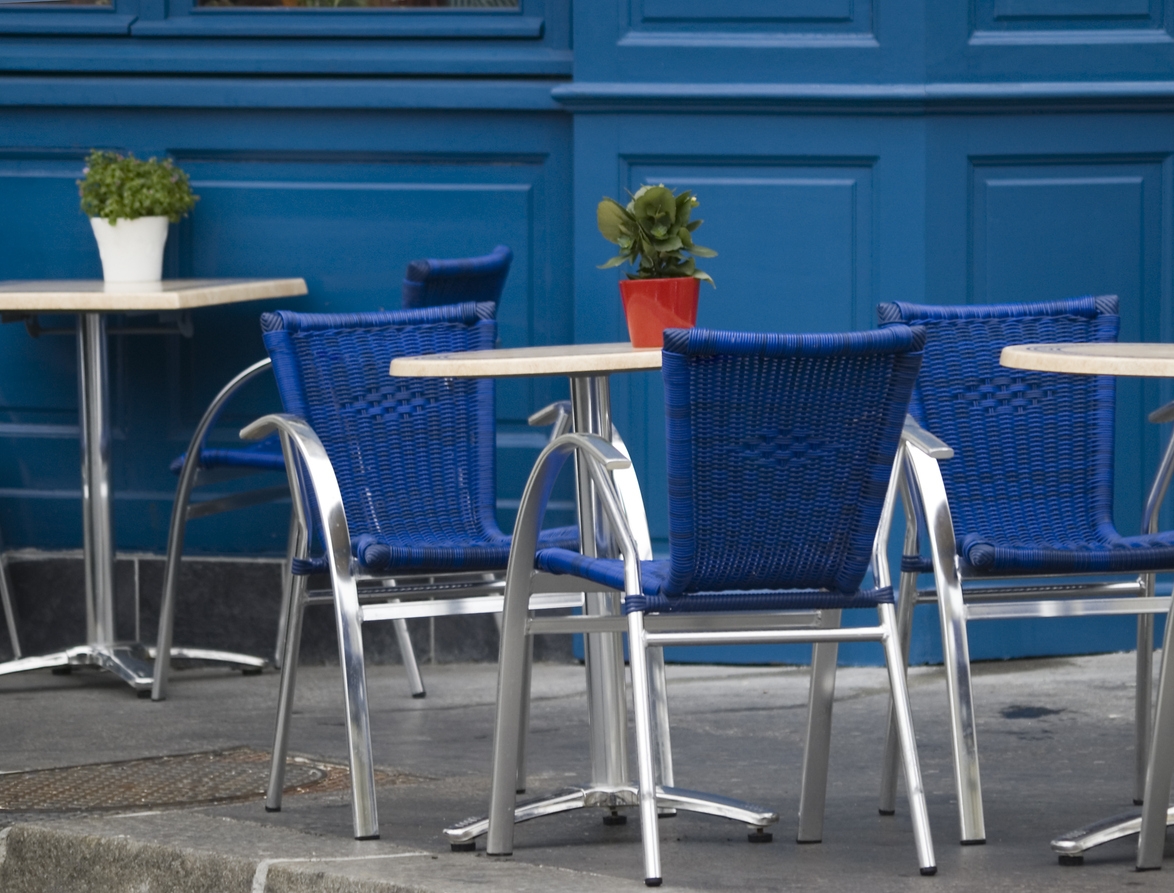If you own a Danville, CA area restaurant, you know the daily challenges of running it. These challenges include inventory management, rising raw material costs, changing consumer preferences, competition, food safety, and marketing, among other things.
Painting is also crucial for maintaining and updating a restaurant’s appearance. Well-chosen colors can enhance the dining experience and reflect your brand. At the same time, maintenance keeps your property durable and able to withstand foot traffic. You may also need to tackle projects such as wallpaper removal, wood rot repair, and light carpentry work.
It is also crucial to ensure minimal disruption to the Livermore, CA business while doing the upkeep. Therefore, painting during non-business hours is necessary to avoid disturbing customers and staff, ensuring a seamless dining experience and uninterrupted operations.
The importance of restaurant aesthetics
Restaurant aesthetics are crucial in shaping the overall dining experience and can significantly impact a restaurant’s success. Here’s a brief discussion of their importance:
Impact on customer perception and experience
- First impressions: A well-designed restaurant can create a positive first impression. It attracts customers and sets the tone for their dining experience.
- Comfort and enjoyment: Comfortable seating, pleasant lighting, and thoughtful decor enhance the overall enjoyment of a meal, encouraging customers to stay longer and return.
- Social media appeal: Visually appealing restaurants are more likely to be shared on social media, which increases visibility and attracts new customers.
Influence on brand identity and ambiance
- Brand differentiation: Unique and consistent aesthetics help distinguish a restaurant from competitors, reinforcing its brand identity and values.
- Theme and concept: The design can convey the restaurant’s theme or concept, such as a rustic, modern, or cultural ambiance, which can attract a specific target audience.
- Mood setting: Aesthetics contribute to the ambiance, setting the mood for different dining occasions, from casual lunches to romantic dinners.
Role in maintaining hygiene and cleanliness
- Perception of cleanliness: A clean and well-maintained appearance reassures customers about the restaurant’s hygiene standards, influencing their willingness to dine there.
- Operational efficiency: Thoughtful design can facilitate better hygiene practices, such as easy-to-clean surfaces and well-organized spaces that minimize clutter and cross-contamination.
- Regulatory compliance: Aesthetics that prioritize hygiene can help ensure compliance with health regulations, avoiding potential issues with inspections and customer complaints.
Overall, restaurant aesthetics are vital for creating a positive dining experience, reinforcing brand identity, and maintaining high hygienic standards, all of which contribute to the restaurant’s success.
The challenges of painting a restaurant
Like painting other business establishments in Alamo, CA, painting a restaurant comes with several significant challenges:
1. Limited time window for painting:
- Restaurants typically have specific operating hours, which limit the available time for painting. To avoid interfering with business hours, painting is often necessitated during off-hours, such as late at night or early in the morning. The compressed time frame can pressure the painting crew to complete the job quickly, potentially compromising the quality of the work.
2. Need to avoid disruption to daily operations:
- Ensuring that the painting process does not disrupt a Pleasanton, CA area restaurant’s daily operations is crucial. It includes managing noise, odors, and movement of staff and customers. The presence of painters and their equipment can interfere with the smooth functioning of the restaurant. It can also make it essential to carefully plan the logistics and timing of the project to minimize any negative impact on service and customer experience.
3. Ensuring safety and compliance with health regulations:
- Restaurants must follow stringent health and safety regulations. Painting is vital to ensuring the environment remains sanitary and safe for staff and customers. To prevent contamination, non-toxic, low-odor paints must be used, the area must be properly ventilated, and food preparation and storage areas must be securely covered. The painting process must also comply with local health codes and regulations to avoid any legal or operational issues.
Addressing these challenges requires meticulous planning, clear communication with all stakeholders, and possibly working with experienced contractors who understand the unique requirements of painting a restaurant.
Preparation and planning
Preparation and planning in painting a restaurant
1. Scheduling the painting project around business hours
- Goal: Minimize disruption to the restaurant’s operations.
- Steps:
- Conduct the painting during off-hours, such as late at night or early morning.
- Plan for painting during closed days or slow periods to avoid affecting peak business times.
- Break the project into phases, allowing restaurant sections to remain open while other areas are under painting.
2. Communicating with staff and management
- Goal: Ensure everyone is informed and can plan accordingly.
- Steps:
- Hold regular meetings with staff and management to discuss the painting schedule and project details.
- Provide updates and reminders about the timeline and any changes.
- Communicate any potential impacts on their roles or schedules to avoid confusion and maintain smooth operations.
3. Selecting appropriate painting materials and techniques
- Goal: Choose materials that will dry quickly, have minimal odor, and are safe for the restaurant environment.
- Steps:
- Quick-drying paints: Use paints that dry rapidly to reduce downtime and the risk of smudging or damage.
- Low-odor and non-toxic options: Select paints labeled as low-VOC (volatile organic compounds) to ensure a safer environment for staff and customers, minimizing health risks and unpleasant smells.
- Techniques: Professional painting techniques are used to achieve a high-quality finish efficiently, such as spray painting for large areas or using rollers for smooth surfaces.
Efficient painting techniques for limited timeframes
Painting a Diablo, CA area restaurant efficiently within a limited timeframe requires strategic planning and execution. Here’s a detailed discussion of the techniques and considerations to ensure a successful and timely painting project:
Utilizing a professional painting team
Engaging a professional painting team is crucial for efficient and high-quality results. Professional painters bring several advantages:
- Expertise and experience: Professionals have the experience and expertise to handle various painting challenges, ensuring a smooth and even application.
- Speed and efficiency: With specialized tools and techniques, a professional crew can complete the work much faster than an untrained crew.
- Quality assurance: Professional painters use high-quality materials and adhere to industry standards. The result is a durable and aesthetically pleasing finish.
- Project management: They can manage the project from start to finish, including preparation, painting, and cleanup, reducing the burden on restaurant management.
Strategies for quick and effective painting
Efficient painting strategies help minimize downtime and disruption to the restaurant’s operations. Key strategies include:
1. Sectioning off Areas to minimize disruption
- Divide and conquer: Divide the restaurant into manageable sections, painting one area at a time. This step allows parts in the restaurant to remain operational while the paint crew works elsewhere.
- Off-peak hours: Schedule painting during off-peak hours, such as overnight or early morning, to avoid disrupting peak service times.
- Clear signage and barriers: Clear signage and physical barriers should be used to section off areas where the crew paints, ensuring safety and minimizing interference with customers and staff.
2. Prioritizing high-traffic areas
- Focus on visibility: Prioritize high-traffic and visible areas such as the entrance, dining areas, and restrooms. These areas leave a lasting impression on customers.
- Fast-drying paints: Quick-drying paints are used in these areas to reduce the time they are out of service.
- Layered approach: Apply primer and base coats during closed hours and finish with top coats when customers are not present to ensure thorough drying and curing.
Importance of thorough preparation and cleanup
Preparation and cleanup are critical components of an efficient painting project. Proper preparation ensures better paint adhesion and a longer-lasting finish, while thorough cleanup maintains the restaurant’s cleanliness and safety.
1. Thorough preparation
- Surface cleaning: Clean all surfaces to remove grease, dust, and grime. It ensures the paint adheres properly.
- Repairs and patching: Fill holes and cracks. Then, sand rough areas to create a smooth surface for painting.
- Priming: Apply primer to ensure even paint coverage and to improve the paint’s durability.
- Taping and covering: Use painter’s tape to protect edges and trim, and cover furniture and fixtures with drop cloths to prevent paint splatters.
2. Thorough cleanup
- Immediate cleanup: Clean up paint spills and splatters immediately to prevent permanent stains.
- Ventilation: Ensure proper ventilation to disperse paint fumes and speed up drying times.
- Debris removal: Properly and responsibly dispose of all painting materials, such as drop cloths, tape, and empty paint cans.
- Final inspection: Conduct a final inspection to touch up any missed spots and ensure all areas are clean and ready for reopening.
Efficient painting techniques for a restaurant within a limited timeframe involve a combination of professional expertise, strategic planning, and meticulous preparation and cleanup. By utilizing a qualified painting contractor, sectioning off areas, prioritizing high-traffic zones, and ensuring thorough preparation and cleanup, the crew can complete the painting project efficiently with minimal disruption to the restaurant’s operations.
Tips for restaurant owners
Painting a restaurant is a significant task that can significantly affect the ambiance and appeal of the establishment. Here are some essential tips for restaurant owners when considering painting their restaurants, covering aspects like finding a reliable painting contractor, budgeting and cost considerations, and maintaining newly painted areas.
1. Finding and hiring a reliable painting contractor
Research and recommendations:
- Ask for recommendations: Ask fellow restaurant owners, friends, or family for recommendations. Personal experiences can provide reliable insights.
- Online reviews: Check online review sites like Yelp, Google Reviews, and Angie’s List for feedback on local contractors.
- Portfolio and references: Look at contractors’ portfolios and ask for references from previous clients to gauge their quality of work and reliability.
Qualifications and experience:
- Licensed and insured: Ensure the contractor is appropriately licensed and insured to protect against potential liabilities.
- Experience in commercial projects: Choose contractors with prior experience in commercial projects, particularly restaurants, as they will understand specific needs and compliance requirements.
Detailed proposals:
- Written estimates: Obtain detailed written estimates from multiple contractors, including a breakdown of labor, materials, and any additional costs.
- Project timeline: Get a clear timeline for the project, including start and end dates, to minimize disruption to your business operations.
Communication:
- Clear communication: Choose a contractor who communicates clearly and is responsive to your questions and concerns. Good communication is crucial for a smooth project.
2. Budgeting and cost considerations
Set a realistic budget:
- Determine scope: Define the project scope to understand what areas the crew will paint and what required preparation work.
- Quality of materials: Decide on the quality of paint and materials. Higher-quality paints might be more expensive upfront but can offer better durability and finish.
Cost breakdown:
- Labor costs: Labor costs can vary significantly. Consider the contractor’s rate, which could be hourly or per project.
- Materials and supplies: Include costs for primer, paint, brushes, rollers, tape, drop cloths, and other necessary supplies.
- Additional expenses: Consider potential additional costs such as repairs to walls, moving furniture, or special finishes.
Contingency fund:
- Unexpected costs: Set aside a contingency fund (typically 10-20% of the total budget) to cover any unforeseen expenses during the project.
3. Maintaining newly painted areas
Regular cleaning:
- Appropriate cleaning methods: Use appropriate cleaning methods for different paint finish types. For example, use a soft cloth and mild detergent for matte finishes and avoid abrasive cleaners.
- Routine dusting: Regularly dust walls and trim to prevent buildup that can dull the paint.
Address damage promptly:
- Touch-ups: Keep a small amount of the original paint for touch-ups to cover any scuffs, scratches, or chips that occur over time.
- Quick repairs: Address any damage to the painted surfaces promptly to prevent further deterioration.
- Preventive measures:
- Wall protectors: Use wall protectors or guards in high-traffic areas to minimize damage from chairs, carts, or equipment.
- Regular inspections: Inspect painted areas regularly to identify and address issues early.
Environmental factors:
- Humidity control: Manage humidity levels to prevent mold and mildew growth, especially in kitchens and restrooms.
- UV protection: Use UV-resistant paints or apply UV-protective coatings in areas with high sun exposure to prevent fading.
By following these tips, restaurant owners can ensure a successful painting project that enhances the aesthetics and functionality of their space while effectively maintaining the newly painted areas.
Conclusion
Restaurant aesthetics are vital for customer experience and branding, with challenges like durability, theme cohesion, and project smoothness. Effective planning and execution, complemented by meticulous plan implementation, are vital for successful restaurant outcomes through cohesive aesthetics and efficient operations.
Restaurant owners should prioritize regular painting and maintenance to uphold their establishment’s appeal and durability. Investing in upkeep enhances customer satisfaction and prolongs the premises’ lifespan. Take action today to maintain your restaurant’s charm and functionality. Call Custom Painting, Inc. at 925-866-9610 or complete the online contact form. Our licensed, insured, and skilled painters ensure expert handling of your painting needs, preserving your establishment’s quality and appeal.






